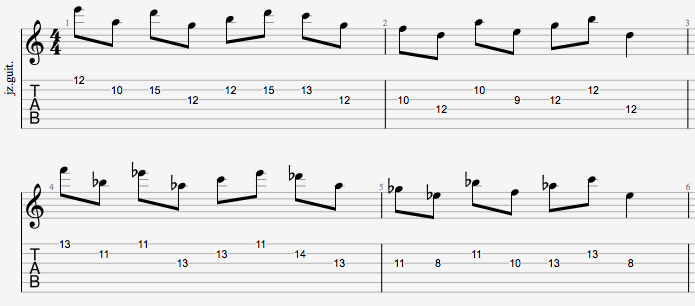So, I’ve noticed there’s some controversy out there about fretboard organization, CAGED and 3nps camps arguing about which is best. Personally, I find this whole thing being a bit silly, since if something works for someone then this is self evident.And also whatever works for me might not work for someone else, and vice versa.
I wonder, then, what works for you guys? How you apply all the stuff you need on the fretboard? Are you faithful to one system that gets you through every time or you feel there are certain shortcomings that make you modify, expand or switch to another type of organization?
Here’s my tale: when I first started, I was taught what we now call CAGED. I remember spending a whole summer when I was 15 going up and down the shapes in every key. I had great time with those for a few years. Later, as I was getting deeper into jazz I remember I had the feeling that something was missing. I believe it was after getting a Ted Green’s book about single note playing that I started practicing what eventually was the 12 position system. By the time I stumble upon Advancing Guitarist I was already deep in that, but Goodrick’s book added still another dimension-that of playing up and down on a single and pair of strings. So, for many years I practiced all the material I was dealing with in positions-all scales, all arpeggios, patterns, intervals, playing through changes-while at the same time being aware that an entire wave of players used to great effect the 3nps approach, something that initially seemed just like another way of navigating the fretboard, but progressively I realized there were some advantages in the mechanical domain. Hmmm, how interesting…
Eventually, observing how my picking technique was coming together-what worked and what didn’t-and having a wide variety of fingering options for all material-12 position system and playing up and down on single strings does that to you-I started selecting those that made my picking hand feel natural. I realized that, the more consistent my picking hand mechanics were-in terms of string crossing-the easier and faster I could play. So, I started aiming for that consistency, sticking with fingerings that enable my pick to operate in a predictable, symmetrical fashion-2,3,4nps depending on the line at hand and often switching from one to another.
So, the way I see things now, I let the material dictate the fingering. Say, if it’s a descending bebop scale, I’ll do it 4nps. If it’s a series of 3 note quintal arpeggios, I’ll finger them in adjacent string shapes and move those around using hybrid picking. If it’s pentatonic I’ll do 2 or 3 nps, depending on the line. And so on…
So, what’s your tale guys?


